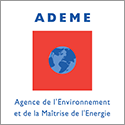#5 Biomimetism: a solution for building in hot climates?

In more than 4 billion years, Nature has acquired certain know-how in design. So why not apply it to human productions? This is the essence of biomimetism. Used by scientific research, this know-how is also highly appreciated in architecture. To what extent does Nature have efficient models to teach us in order to limit our energy consumption? Answer in this article following an interview with Nicolas Vernoux-Thélot, architect and founder of the firm In Situ Architecture and designer of the Nianing church.
According to Darwin, Nature has given and imposed the keys to successful evolution on certain species. While this selection process is well known genetically or biologically, it is equally important in terms of habitat adaptation. This is the case for some trees, connected by a vast underground network and forming a single living being. In a warm climate, one of the most spectacular expressions of Nature is probably the termite mound. By taking advantage of air flows, it offers a constant temperature of around 27°C, while the outside environment can reach a temperature range of 50°C.
In view of these efficient and highly evolved adapted survival strategies, it is therefore very relevant to question the application of these strategies to human production, particularly in hot climates.
The singularity of biomimetism compared to other design processes
Biomimetism clarifies how biological systems solve problems. Although extraordinary in evolutionary terms, human intelligence differs from the intelligence of Nature. Research suggests that this last one is both slow and intelligent in the way she solves difficulties. Indeed, despite their sophisticated appearance and the speed with which they are implemented, most man-made solutions are "rudimentary and additive". In other words, they are based on the use of more materials and energy (two expensive resources) to accelerate reactions. Natural processes exploit geometries and material properties that are unique, at the risk, of sacrificing a large number of individuals before a satisfactory response appears.
The contribution of biomimetism to architecture
Architecture is a discipline influenced by many aspects of the natural and social sciences. Among these influences, the inspiration of biology is currently booming. In the building sector, Nature can inspire us in several ways and could help improve the environmental performance of projects and consequently meet the challenges of sustainable development.
Whether it is to improve the insulation or ventilation of buildings or the quality of materials and the strength of structures, the solutions implemented are generally very effective. This is more and more the case in a society where the focus is increasingly on resource saving.
Biomimetics experts currently agree that there are two possible approaches:
- either we search in the nature to find phenomena likely to respond to sustainable development issues and try to transfer them to architecture,
- Or we start from architectural problems and try to find in nature the phenomena that we could apply.
Both approaches require multidisciplinary activity involving the cooperation of biologists and architects.
Inspiring from the Nature under hot climate
The particularity of construction in tropical or desert climates is that it most often takes place in environments with strong natural constraints, whether in terms of temperature, precipitation, climatic or land-based events or resource management. By taking into account vegetation from the design stage of cities, it is possible to reduce the effect of heat islands.
Nature also provides an inexhaustible source of geometric shapes, designs and colors. Inspirations that can be used daily by architects in the development of their projects. This is particularly true for densifying cities in hot climates, while respecting an arrangement that makes them more comfortable and energy efficient. Anticipating the urban plan and adapting it to local conditions allows for better regulation of air flows and optimization of solar capture.
The termite mound: a source of inspiration for biomimetism
The termite mound is undoubtedly one of the best examples of a source of inspiration for biomimetics in hot or tropical climates. The resulting air flow management can be applied to all types of buildings. From the traditional shopping center, such as the Eastgate Centre in Zimbabwe, or the Nianing church, this takes its shape, principle and color in a stylish way.

Consult the previous article:: #4 Building bioclimatic in tropical climate and Reunion Island





